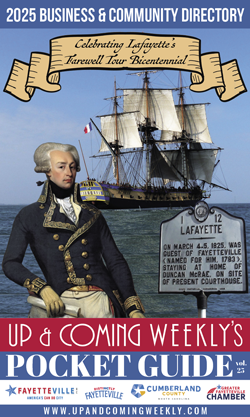 The Sandford House, a part of Heritage Square located at 224 Dick Street, has had several residents and owners from the time it was built in 1797. The Daingerfield family is one of the more interesting families to live in and own the home. Father John E.P. Daingerfield and his son Elliot have a fascinating history and artistic legacy, whose influence spans from the Civil War to celebrated contributions in American Art.
The Sandford House, a part of Heritage Square located at 224 Dick Street, has had several residents and owners from the time it was built in 1797. The Daingerfield family is one of the more interesting families to live in and own the home. Father John E.P. Daingerfield and his son Elliot have a fascinating history and artistic legacy, whose influence spans from the Civil War to celebrated contributions in American Art.
The Early Years: John E.P. Daingerfield and the Civil War
John E.P. Daingerfield, a former Confederate Captain, has an intriguing historical background deeply rooted in the Civil War era. Daingerfield was Acting Paymaster at the Harpers Ferry Armory during John Brown's 1859 Raid, where he was taken hostage but not injured. On June 10, 1861, he joined the Confederate States Army and was transferred to Fayetteville as munitions and manufacturing equipment were relocated to the Fayetteville Arsenal.
During his service, he was appointed military paymaster and storekeeper by Maj. John C. Booth, commanding officer at the Fayetteville Arsenal. These roles were prestigious within the Army, and Daingerfield served in the 2nd Battalion Local Defense Troops, commonly called the Arsenal Guard. His firsthand account of John Brown's Raid was later published in The Century Magazine in June 1885, providing a unique perspective from a prisoner's standpoint.
Elliott Daingerfield: From Fayetteville to New York
Elliott Daingerfield, the son of John E.P. Daingerfield, was born in Harpers Ferry, West Virginia, and raised in Fayetteville. He also kept a vacation retreat nestled in Blowing Rock, NC.
Unlike the landscape artists before him, he chose to paint from memory instead of observing nature firsthand. He believed this approach infused his art with a deeper sense of spirituality, as it was filtered through the lens of his imagination.
His artistic journey began in earnest when he moved to New York at the age of 21 to study art. Elliott's time in New York marked the beginning of his significant contributions to American art. His early works and teaching experiences laid the foundation for his future success and recognition in the art world.
In the late 1890s, Daingerfield gained recognition for his paintings of religious subjects, including a notable mural in the Church of Saint Mary the Virgin in New York City. His growing reputation culminated in his election to the National Academy of Design as an associate member in 1902 and as a full member in 1906.
The legacy of the Daingerfield family continues to be celebrated in modern times, particularly through the works and influence of Elliott Daingerfield. Considered one of North Carolina's most prolific artists, Elliott's contributions to American art remain significant. His works are still admired for their visionary style and religious themes, which have left a lasting impact on the art community.
The South Parlor of the Sandford House, known as 'The Daingerfield Room,' displays Elliott Daingerfield's painting 'Angel of Beauty,' among other artifacts. Visitors can walk through the historical home and gain insights into the lives of the Daingerfield family, their contributions to American history and art, and their lasting impact on the cultural heritage of North Carolina.
(Photo: Midnight Moon, a painting by Elliot Daingerfield. Image courtesy of the Brooklyn Museum via Wikipedia)

 How to resolve AdBlock issue?
How to resolve AdBlock issue? 








